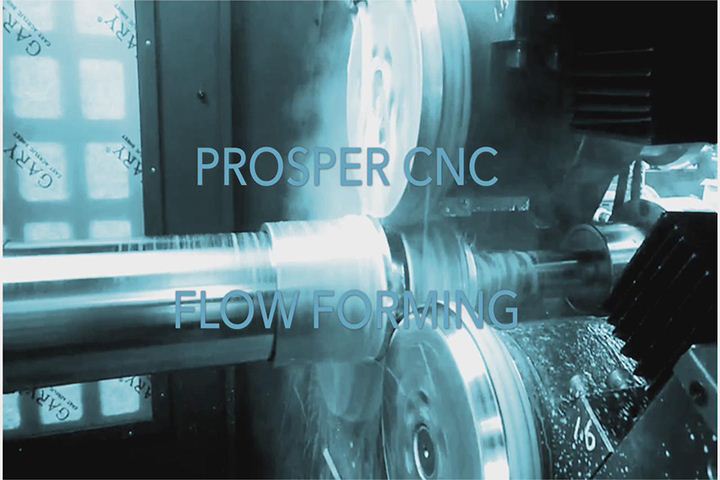Metal Spinning Technology Cooling and Lubrication
Date: Jun,09 2020 View:
Metal Spinning Technology Cooling and Lubrication
Spinning, especially during strong spinning, the local deformation amount and deformation speed of the material are quite large, and the friction between the workpiece and the contact surface of the rotary wheel and the core mold is also very serious, so a lot of heat is inevitably generated during the spinning. If this heat is not dissipated in time, the temperature of the workpiece and the mold will increase. According to the measurement, the local temperature of the workpiece during spinning can reach 400-500 ℃, which will undoubtedly affect the dimensional accuracy of the spinning parts, the life of the mold and the stability of the spinning process, and sometimes even cause cracks in the workpiece due to thermal stress. Therefore, sufficient cooling must be carried out during spinning to reduce the local temperature of the workpiece to below 100 ° C, which is very important for the production of large quantities and important spinning parts. In addition, the material flows on the contact surface between the workpiece, the roller, and the core mold due to the effect of high pressure and heat generation, and adhesion is likely to occur. Therefore, it is necessary to perform sufficient lubrication during spinning.
The effect of cooling and lubricating the spinning parts depends on the type and flow rate of the cooling lubricant. Generally, when cold-spinning aluminum alloy, low-carbon steel and other materials, since the heat of deformation is not large, it can be cooled with emulsion and lubricated with motor oil (molybdenum disulfide if necessary). When this kind of material is cold-spinned, it is directly lubricated with oil on the inner and outer surfaces of the blank. The alloy steel and other materials are better for cooling and lubrication at the same time with emulsion. Since stainless steel is easy to adhere to the surface of the roller during spinning, it can be cooled by engine oil or emulsion, and lubricated with molybdenum disulfide oil. If a small amount of epoxy resin is added to the lubricant, it can better adhere to the blank and the tool surface, so as not to be washed away by the coolant.
The coolant should have a large specific heat and good fluidity. The lubricant should have greater adhesion and wettability. During the process, the two should not produce harmful volatiles to pollute the environment, chemical reaction with the workpiece, or corrosion of the machine tool. In addition, the addition of cooling lubricant should be as full, uniform and continuous as possible. Sometimes a sudden interruption of the coolant will cause the post-rotating workpiece to hold the mold tightly, making it difficult to remove, and even cause the workpiece to be scrapped.
The cooling lubricant generally has a flow rate of 200 to 400 liters / min. For mass production and large spinning equipment, it is required that the equipment have a cooling device with a larger capacity.
The following introduces a formula of cooling lubricant with very good cooling and lubrication effects:
Sodium nitrite (used to prevent rust): 0.30% ~ 0.50%
Ethanolamine (lubricating): 0.50% ~ 0.75%
Oleic acid (lubricating): 0.25% ~ 0.50%;
OP (alkyl aryl polyglycol ether, deoiling function): 0.25% ~ 0.50%;
Water (for cooling): the rest
For strong spinning of heat-resistant alloys, the tendency of materials to bond is serious. In this case, chlorinated paraffin oil lubricant is used for lubrication, and sulfite pulp waste liquid plus graphite lubricant and spindle oil plus graphite lubricant can also be used. But the former is preferable because of its heat resistance and economy. It is composed of pulp industry waste, that is, two parts of sulfurous acid pulp waste liquid and one part of graphite, and then diluted with water at the following ratio: one part of sulfuric acid pulp waste liquid with a specific gravity of 1.27 is added with about 2.5 parts of water. The lubricant should be well mixed before use.






